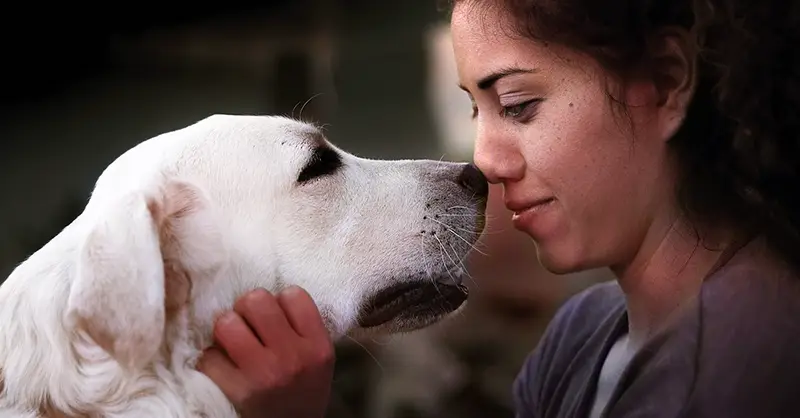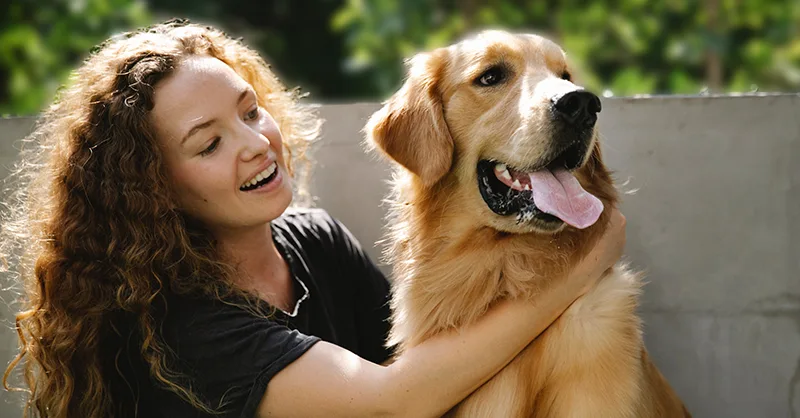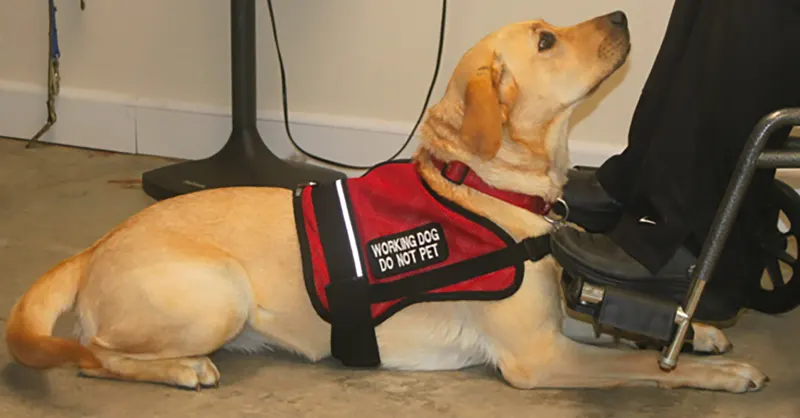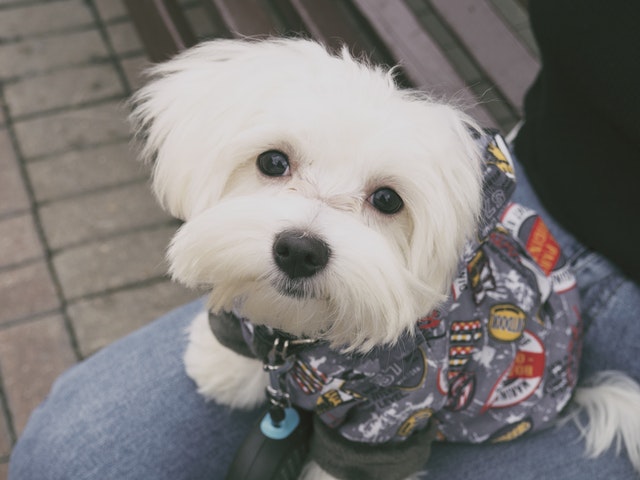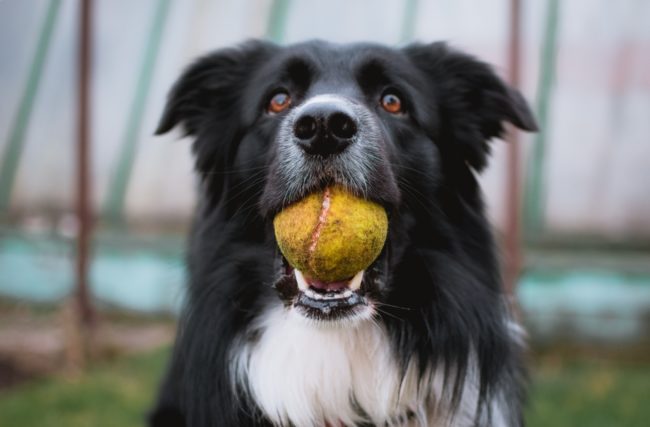Archive for the ‘Dogs’ Category
Who can resist the snow white coat, dancing eyes, and spunky nature of the Maltese? This cute, spritely little pooch excels at many things like agility, tracking, obedience, and rally.
Can a Maltese be a Service Dog? If so, you would be able to go anywhere you go with your Maltese!
Read on as we explore the world of service and how the Maltese may be of assistance.
General Traits of the MalteseOver the decades, the Maltese have been given many names. These include;
Melitae Dog Ye Ancient Dogge of Malta The Roman Ladies Dog The Comforter The Spaniel Gentle The Bichon The Maltese Lion Dog The Maltese TerrierToday, he is known just as the Maltese.
This beautiful breed has flowing silky white hair, giving this dog the illusion of floating when walking. Because the Maltese don’t have an undercoat, it sheds very little and has been acceptable for those that suffer from mild pet allergies.
The Maltese needs minimal exercise and is therefore quite adaptable to living in apartments, condos or homes with small yards. However, it does not do well left alone for long periods-of-time. In fact, a neglected Maltese can suffer from separation anxiety which can lead to destructive behaviors such as excessive barking and chewing,
Personality wise, the Maltese is a lot of dog packed into a small package. He loves the companionship of his family and takes well to positive reinforcement training methods (treats, praise, and play).
They are a fearless breed that gets along with most people and other animals. If you are looking for a dog to alert you to strangers at the door, the Maltese is very responsive to his surroundings.
As with all dogs, to have a well-rounded Maltese, experts recommend early socialization and even puppy kindergarten classes. These are both excellent ways to expose your pup to new people, other dogs, and outside situations.
Fast Facts About the Maltese
Height: 8 to 10 inches at the shoulder
Weight: Up to 7 pounds
Lifespan: 12 to 15 years
The Maltese as a Service DogAlthough the Maltese would not be suited for heavy service work, such as pulling a wheelchair, this breed can be helpful in other areas.
Because this breed is very trainable, a person needing help with opening low cabinet doors or retrieving small objects may find the Maltese a valuable asset.
The Maltese can also be trained as a Medical Alert canine. This includes giving people a warning when they have a drop in blood sugar, for epilepsy, low oxygen levels, etc.
Therapy work is another area of service where the Maltese will excel. The breed is small and compact enough, so people who are dealing with emotional or psychiatric conditions can bring the dog along for support – it loves to be cuddled, and thrives on human attention making this area of service work a natural fit.
This little pooch would also make an excellent outside therapy dog bringing joy and comfort to those folks in nursing homes, hospitals, palliative care facilities, schools, or disaster relief situations.
What to Look for in a Potential Service DogThe breed isn’t the only factor you need to look for in a Service Dog. Here are some additional qualities a good Service Dog should possess;
Intelligence, obedience and the ability to problem-solve. Should be the right size, and have the proper amount of strength, and stamina to perform the duties. The dog must be physically active, yet calm and well-behaved when in public. Not hyper, snappy or creating a ruckus. Can a Maltese Be a Service Dog?With the proper training and early socialization, there are many areas of service the Maltese would excel at. If you are looking for a compact pooch with a lot of love to give, you can’t go wrong with the Maltese.
As with any canine, be sure to seek out a reputable breeder or rescue organization to adopt your Maltese. These people can direct you to the best puppy they have for the task of service work.
Getting the help, you need to make your life a little bit easier can be found in the perfect Service Dog. Find one today that suits your needs and get back to living a healthier lifestyle.
When we say “Pitbull,” it may unfairly conjure up images of a blood-thirsty beast out to destroy anything in its path. Nothing could be further from the truth.
The Pitbull has gotten a bad reputation over the years due to cruel people using them for illegal dog fighting rings. These dogs are victims of animal abuse like any other helpless canine that finds themselves in the hands of an unscrupulous individual.
The term “Pitbull” is also a misnomer. There is no recognized breed of Pitbull, but instead, four registered Bully breeds that get lumped into one category. These include the American Pit Bull Terrier, American Staffordshire Terrier, American Bully, and the Staffordshire Bull Terrier.
All of these “Pitbulls” are battling their way out of an unfair image. Some are even finding their way into the world of therapy work.
In this post, we will explore the question; can a Pitbull be a therapy dog?
General Traits of the Pit BullAll of the “Pitbull” breeds share similar traits. They are all blocky in build with square heads and muzzles. Despite their shorter stature, the Bully breeds are also deceptively strong.
They all have very short, straight coats that come in a variety of colors.
Personality wise, the Bully breeds tend to be on the stubborn side (this is their Terrier” nature coming into play). However, that doesn’t mean they aren’t highly trainable. With the right techniques (a gentle, yet firm hand, positive reinforcement, and a willingness to help the breed overcome its lousy rep) these dogs do make wonderful companions.
The Bully breeds have a strong need to please, and therefore are very loyal, loving, and devoted animals. They crave human attention and do not do well left alone for long periods-of-time.
When it comes to exercise, your Bully will need 60 to 90 minutes of vigorous exercise once or twice a day. This can include long walks or hikes, jogging, playing in the park or getting your dog into agility or flyball activities.
Get your Therapy Dog Identification Card Here
What is a Therapy Dog?Unlike a service dog that must provide a task for a disabled individual, the therapy dog is used for comfort and support.
There are three types of Therapy Dogs;
Personal Therapy Dog (aka Emotional Support Animal) – a dog (or other species of animal) that provides general comfort and unconditional love. It does not need to be specially trained for a task. Requires an ESA letter and can travel and live with you. Assisted Therapy Dog – one that joins the handler (typically a doctor, therapist, teacher, etc.) at the workplace to help clients, students, etc. with stress and anxiety. Visiting Therapy Dog – one that is brought into hospitals, schools, hospices, nursing homes, etc. to interact with the people. They are only there for a short period-of-time. The Pit Bull as a Therapy DogDespite many communities imposing breed-specific bans on the Pitbull, there are just as many regions trying to break the stigma.
It is a fact that the “Pitbull” makes an excellent Therapy Dog. Their natural love for people, their eager-to-please attitude, and their ability to withstand pain give them the innate ability to be tolerant in situations where some dogs may not be so.
According to Pitbull Lovers;
“Some people have a hard time getting around, and it’s not altogether unlikely their toes might get stepped on or run over by a wheelchair. I worked a session where a woman had a sensory problem, and she had a compulsive need to pinch things extremely hard once she got a hold of them.
While she never pinched Angel, she could have if we were not paying attention and the outcome would have been Angel having discomfort but not reacting with aggression.
Another breed might have been driven to biting or growling at a person like this.”
All these qualities are what’s making the Pitbull a popular choice in the world of therapy work.
Can a Pitbull Be a Therapy Dog?Pitbulls do make excellent therapy dogs, but as with any breed, early socialization and obedience training are vital to having a well-rounded dog. If you want live with your personal therapy dog (emotional support dog), you must get a letter from a licensed therapist to verify your need.
If you want to get into therapy work or think a canine would be the perfect solution to your emotional issues, then be sure to seek out a reputable breeder or rescue organization.
We all deserve to have a happy, healthy life. The Pitbull is no exception.
When choosing a service dog, whether it be for physical or psychiatric disability, it has to be “need over breed.”
Let’s face it, you may love the Chihuahua breed, but when it comes to aiding you with specific tasks, this little guy may not be up for the job.
Do Border Collies make good service dogs?
In this post, we will explore this popular herding dog to see how it may measure up in providing services to those with disabilities.
General Traits of the Border Collie
The Border Collie was developed to control sheep in the hilly border country between Scotland and England. These canines are known for their steely stare, intelligence, and determination (among other qualities) that makes them excellent herders.
This breed has unlimited energy, stamina, and a strong work ethic. They are also ranked exceptional in intelligence which makes the Border Collie highly trainable.
That’s great when it comes to herding a flock, but what about for service for those that have a disability?
Fast Facts About the Border Collie
Height – Up to 22 inches at the shoulder Weight – 30 to 45 pounds Lifespan – 12 to 15 yearsThe Border Collie as a Service Dog
Border Collies can make excellent service dogs for the right type of handler.
The Border Collie is not a couch potato. This is a breed that needs a job. Providing service for a person with a disability is a job, but is it enough to keep the Border Collie active both mentally and physically?
Owners of this breed state that it can be mentally and physically exhausting, even exasperating, trying to keep up with a Border Collie. This dog is a herding animal, which means it has an overwhelming urge to gather a flock. That flock could be sheep, children, cats, squirrels, or anything that moves, including cars. Along with this instinct comes the urge to nip, nudge, and bark. These traits cannot be trained out of him. Instead, it must be directed.
Service dogs must be well behaved. They cannot, bark, nip, growl, or touch anyone around them, except their handler. Training a Border Collie to be a service animal requires patience and determination.
The positive aspects of training a Border Collie to be a service dog are that they are smart and capable animals. Border Collies can be trained to provide many complex tasks such as picking up dropped items, opening doors, and alerting their handlers.
Border Collie Protectiveness and Herding Trait
Another of the innate traits of the Border Collie is the protectiveness trait. Border Collies are sensitive and, according to those who train these dogs, they have an uncanny ability to understand what you’re going to ask of them before you ask it.
Herding breeds have developed a sense that allows them to pick up on even the most subtle changes in body language. When this happens, the breed reacts accordingly to keep the sheep in line.
Although this is a fabulous trait for a job protecting a flock, it may not always work when it comes to humans.
Now let’s translate this trait to a human that has a psychiatric disability such as PTSD or a phobia. When the Border Collie senses his handler becoming anxious over a situation, sound, or particular person, the dog will react. This reaction (as instinct) can be both good and bad, depending on the type of training and the particular dog’s temperament.
As a service dog, your canine companion will be expected to “get along” with everyone they encounter. Being overly protective not only endangers the general public, but the Department of Justice has specific wording stating that dogs who act in an “aggressive” manner cannot be service dogs. This is not based on breed, but it is something to consider when choosing a Border Collie as a service dog.
Adopt a Border Collie
Border Collies and Service Dog Work
The Border Collie is a highly trainable, intelligent, and sensitive animal. Using it as a service dog may be a challenge for an inexperienced dog owner. It’s not that the Border Collie isn’t capable of the task, it’s that their powerful drive to herd and be overprotective that can be a problem for an inexperienced service dog handler.
Of course, not every dog is exactly the same. If you need a service dog, then find one that has the right temperament, physical stature, and capabilities necessary for your life.
Remember, fill your need over the breed.
